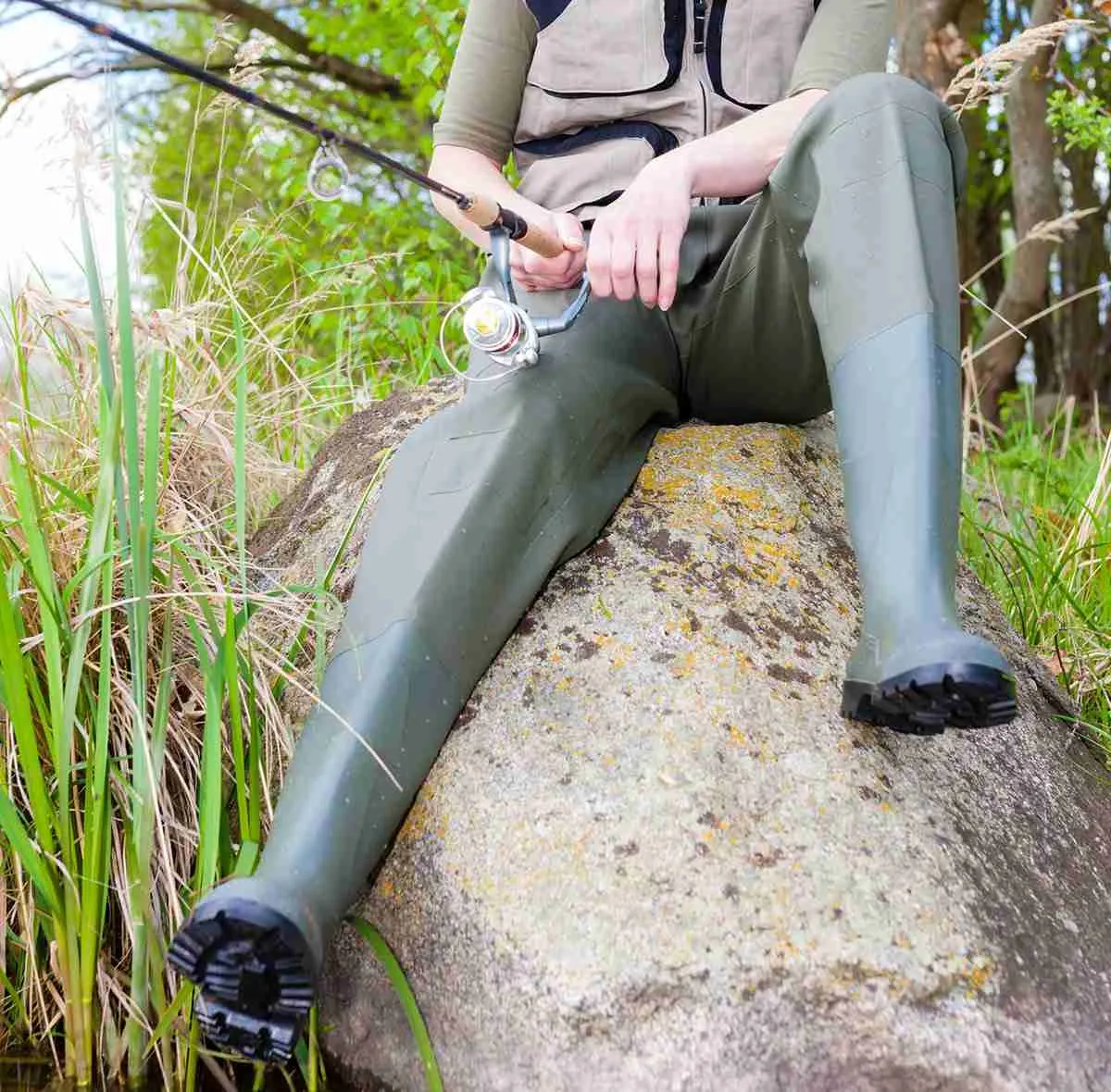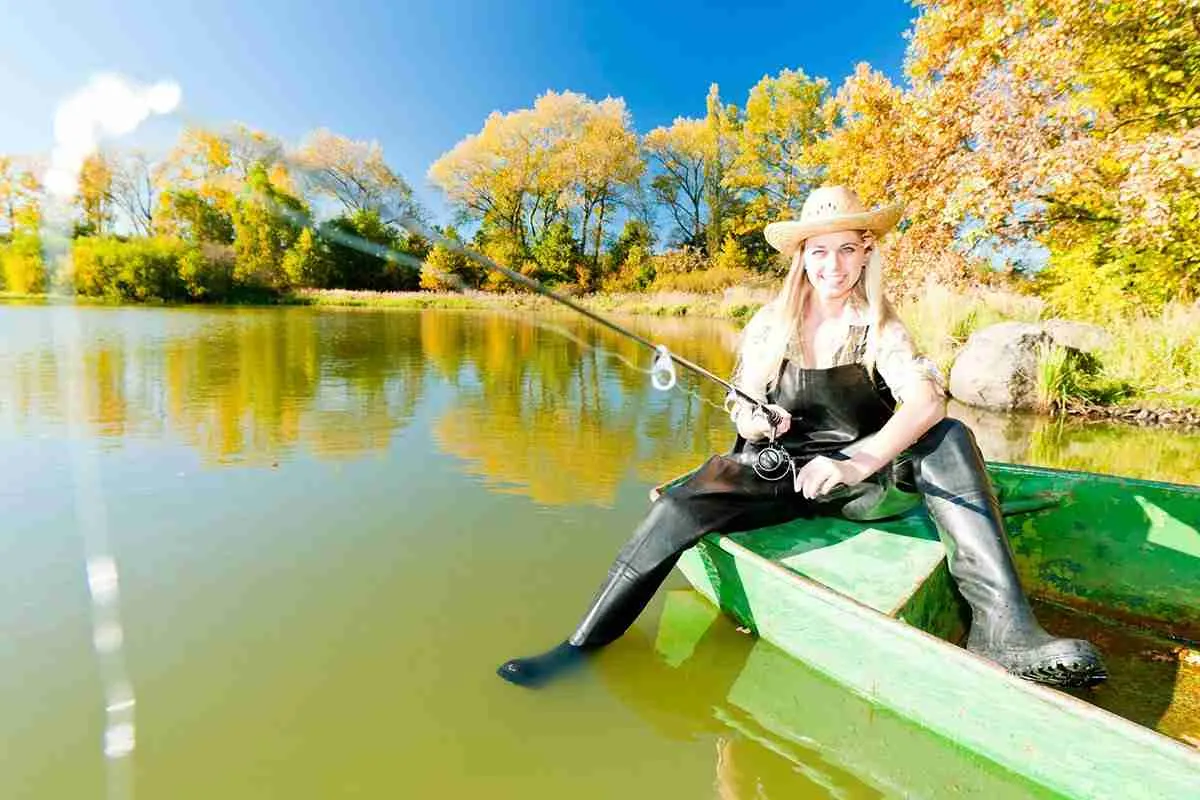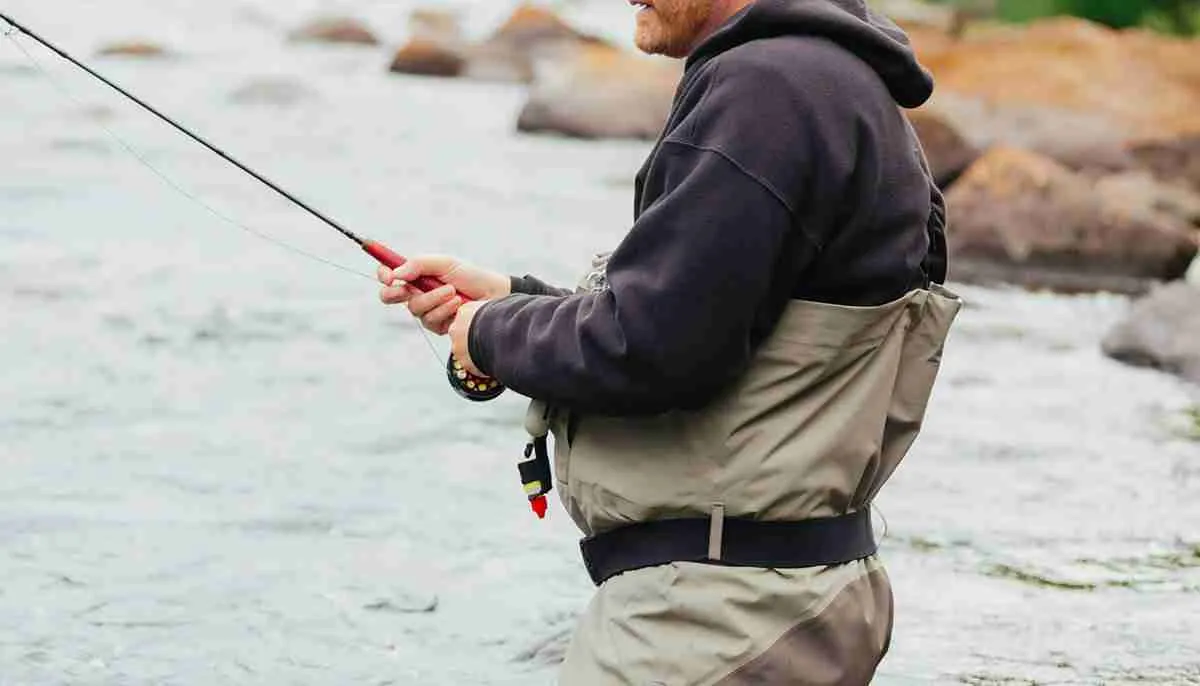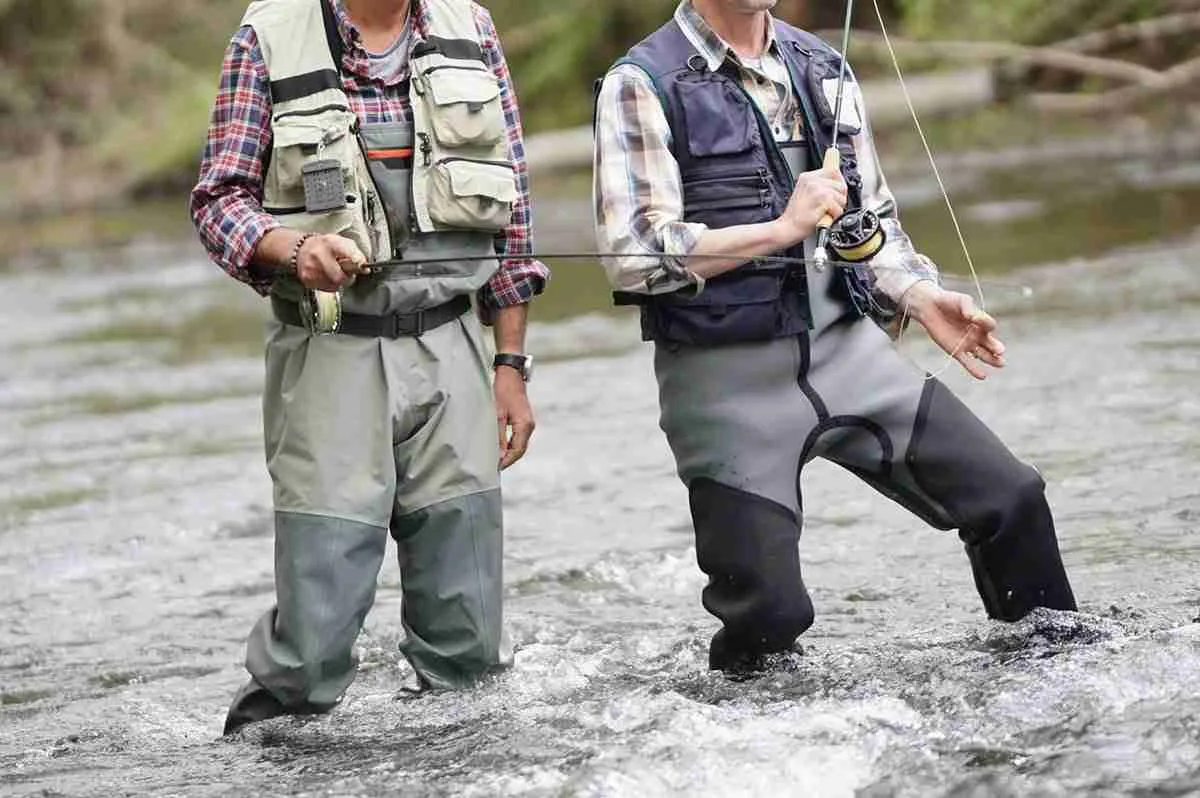If you are a serious angler, you don’t toss your rods in a corner of the shed or the attic when the fishing season winds down for the winter. You remove the old lines from the rod, loosen the drags, and clean and lubricate the reels. Just as you maintain your angling equipment even during the winter, you should also take care of your waders and store them properly.
Here’s how to store waders:
- Wash your waders.
- Dry them thoroughly.
- Apply a direct water repellent.
- Repair any cuts, tears, and punctures.
- Store them flat in a clean dry place.
Storing your waders is not just about packing your gear and stashing it away in a corner for the winter months. You must ensure that they don’t turn into an inviting den for bacteria and rodents to breed. In this article, I will explain all the tasks you have to do before you pack away and store your waders, as well as give you a few tips to help you make your waders last longer.
1. Wash Your Waders
You should always spray your waders with a hose after every use. Give them a deeper clean before storing them away for an extended period. You can wash waders by hand or in a washing machine. Ensure that you read the manufacturer’s instructions on the label first.
Let’s take a quick look at the two different methods of cleaning your waders.
How To Machine Wash Your Waders
Keep the following instructions in mind to wash your waders in the washing machine:

- Wash your waders only in a front-load washing machine. The agitators and impellers in a top-load washing machine twist back and forth or spin to rub clothes against each other to break apart dirt, which can tear your waders.
- Before putting the waders in the machine, take off all removable parts, such as wading belts.
- Use detergents intended specifically for waterproof fabrics.
- Do not use powder detergents.
- Do not use a fabric softener.
- Use a cold-water program with the cold rinse cycle.
How To Hand Wash Your Waders
Soak your waders in a mixture of detergent solution and cold water before washing to loosen dirt and debris. You can scrub the waders gently to remove tough stains. Ensure that you rinse your gear thoroughly with cold water to remove all traces of detergent.
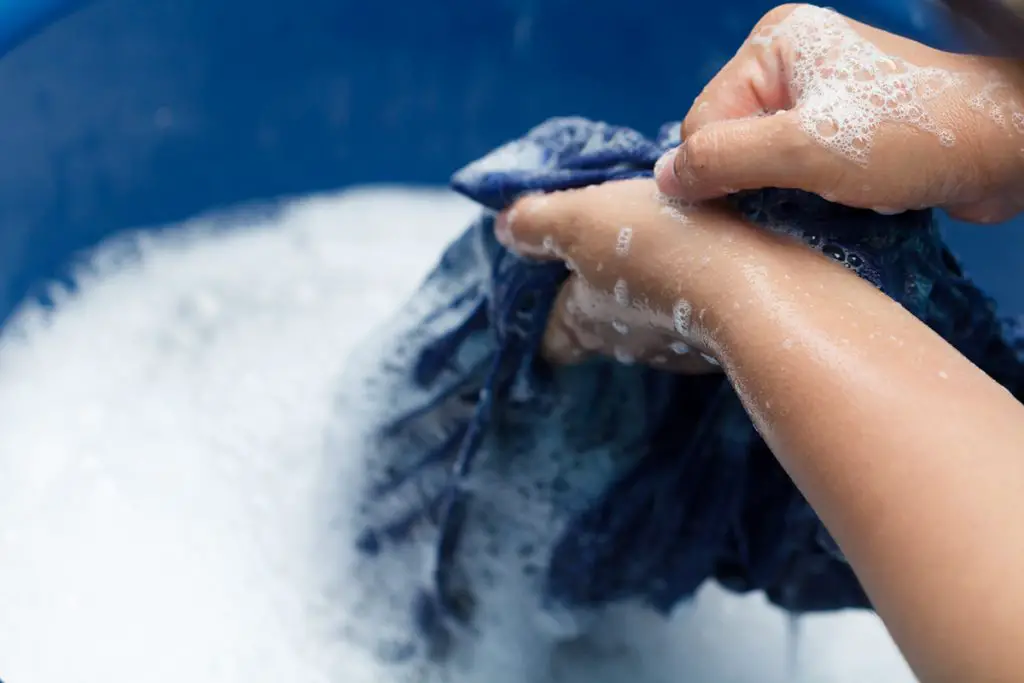
2. Dry Them Thoroughly
You MUST dry your waders thoroughly before storing them to prevent mold from forming.
Air drying is the most effective solution, but you can also tumble dry waders made of certain specific fabrics. Make sure to you read the manufacturer’s care instructions for guidance.
Below are some tips on drying your waders after washing:
- Hang them up by their straps or the hang tag to dry overnight.
- Dry them in a well-ventilated room with ample airflow.
- Do not hang them to dry in direct sunlight for an extended period.
- Never dry them near the fireplace or place them on the radiator.
- When they are completely dry on the outside, turn them inside out and hang them up to dry.
3. Apply a Direct Water Repellent
A direct water repellent protects the waterproof layer of our waders and makes them last longer. Here’s how you use it on your waders:
- Hang your waders when they are damp.
- Spray the repellent solution on the areas that have a waterproof coating. You don’t have to spray the solution on the rubber or neoprene parts.
- Activate the repellent by blowing a hairdryer over the areas where you have sprayed the solution while the waders are still wet.
To get the job done, you can use a product like Gear AID Revivex® Durable Water Repellent Spray from Amazon.com.
4. Repair Any Cuts, Tears, and Punctures
Before stashing away your waders for the winter months, it is a good idea to repair any cut, tear, or puncture that may have developed on your gear. This ensures you can start using your waders right away after you take them out from storage.
Spotting a tear or cut is, however, a challenging task. Turn your waders inside out and look for gaps on the fabric and along the seams. You need a patch of cloth to repair a tear, but if the manufacturer has not included a swatch of fabric with the gear, look for one at your local fly shop.
Here’s how you can fix a tear:
- Pull the cut edges of a tear together.
- Apply a thick coat of sealant over the area. Use a brush to work the sealant under the folds of the fabric and into the stitching.
- Wait till the sealant becomes tacky. This means that it has dried partly but still has a sticky feel.
- Measure a patch of material that is about 1.5 times larger than the area of the tear.
- Press the material firmly over the sealant and hold it for some time.
- You can smear sealant around the edges of the material for an extra bout of protection.
5. Store Them Flat In a Clean, Dry Place
Keep in mind the following pointers for storing waders:
- Do not fold your waders to store them. Folding can cause stress along the joints and creases that eventually lead to cracks and tears.
- Store them flat or hang them by their straps or hangtag. You can also lay them flat under a bed.
- Store your waders indoors, where they will remain protected from the elements.
- If you want to store your waders in the garage or shed, ensure that you keep them in a place where rodents can’t reach and set up nests during the cold days of winter.
How You Should Store Your Waders
Most manufacturers deny warranty privileges if your waders get damaged due to improper storage. You should store your waders properly to prevent mold or mildew from forming.
Mold or mildew can damage the wader material, sometimes even lifting the tape on the seams.
The bacterial growth corrodes the laminated layer of the wader, making the gear less effective at keeping you dry when you tread into the water the next time. Mold or mildew formation also creates an unsightly stain that is hard to remove even after repeated washes.
How To Store Neoprene Waders
Do not fold your neoprene waders to store them. Put them inside a clean and dry plastic bag and hang them up in a cool, dark, and dry closet. For stockingfoot and bootfoot waders, crumple and stuff newspaper in the feet to maintain the shape.
How To Preserve Your Waders For the Long-Term
Besides cleaning your waders thoroughly after each use and storing them properly, here’s what else you can do to make them last longer:
- Ensure they fit properly. Your waders should not be too tight, or else, every time you step, climb, or bend down, the material will be stretched and might develop leaks and tears.
- Coat them with direct water repellent periodically. The layer of water repellent on fishing wear tends to wear off over time. Apply a layer of water repellent occasionally to keep your waders waterproof for long.
- Do not stash objects in the back pocket. The things you put in the back pocket will pull it down and lead to leaks and tears.
- Wear breathable lightweight clothing underneath. Do not wear denim or other thick pieces of clothing under your waders. These types of clothing create points of stress at specific spots on the wader. They also make you uncomfortable because the fabric is not breathable.
- Store your waders in a breathable bag while on the go. Use a breathable bag like Simms’ Taco Wader Bag from Amazon.com to store your waders when you travel. These bags let the wader dry out in storage.
Final Thoughts
Take care of your waders and store them properly to keep them in top shape. They not only keep you dry but also protect you from the cold that could otherwise cause hypothermia. They let you cast a wider net by making it convenient and comfortable for you to stand in water and reach fishing spots that are harder to access from the land.
What To Read Next:

